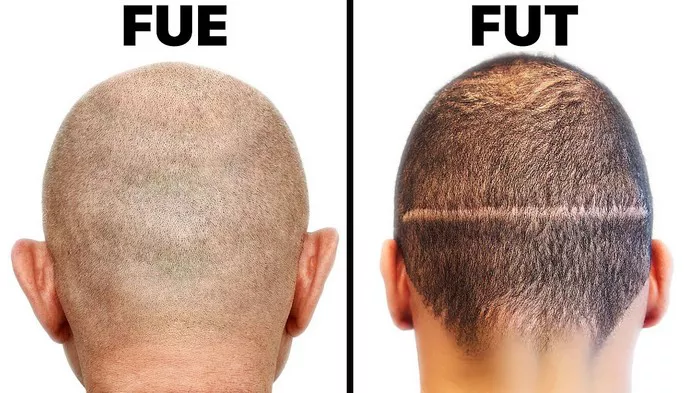Hair loss can be a distressing experience, leading individuals to seek effective solutions for regaining their confidence and appearance. Two primary methods have emerged in the field of hair transplantation: Follicular Unit Transplantation (FUT) and Follicular Unit Extraction (FUE). While both techniques aim to restore hair, FUT offers distinct benefits that often make it a superior option. This article explores the reasons why FUT is considered better than FUE, examining aspects such as the procedure, recovery, results, and long-term considerations.
Understanding FUT and FUE
Follicular Unit Transplantation (FUT)
FUT, also known as the strip method, involves removing a strip of scalp from the donor area, usually the back of the head, where hair is genetically resistant to balding. The strip is then dissected into individual follicular units under a microscope, which are meticulously implanted into the balding or thinning areas.
Follicular Unit Extraction (FUE)
FUE, on the other hand, involves extracting individual follicular units directly from the donor area using a specialized punch tool. These units are then transplanted into the recipient area. FUE is often perceived as less invasive because it doesn’t require a large strip of scalp to be removed.
Why FUT is Better than FUE
1. Higher Graft Yield
One of the most significant advantages of FUT over FUE is the higher graft yield. In FUT, the strip of scalp taken from the donor area allows for the extraction of a larger number of follicular units. This is particularly beneficial for individuals who need extensive hair restoration, as it maximizes the number of grafts available for transplantation.
2. Superior Graft Quality
FUT grafts are often of higher quality than those harvested through FUE. Since FUT involves microscopically dissecting the donor strip, the follicular units are better preserved, reducing the risk of damage. This meticulous handling ensures that the grafts remain intact and viable, leading to better growth rates and more natural-looking results.
3. Less Donor Area Damage
FUT is less likely to cause significant trauma to the donor area compared to FUE. With FUE, multiple small incisions are made to extract individual follicular units, which can result in noticeable scarring and thinning of the donor area over time. In contrast, FUT involves a single, linear incision that can be easily hidden by surrounding hair, minimizing visible scarring and preserving the donor area’s overall appearance.
4. Faster Procedure for Large Sessions
For extensive hair restoration procedures, FUT is generally quicker than FUE. Extracting individual follicular units in FUE can be time-consuming, especially when a large number of grafts are required. FUT allows for a more efficient process, as the donor strip can be removed and dissected into grafts relatively quickly, reducing the overall duration of the surgery.
5. Cost-Effectiveness
FUT tends to be more cost-effective than FUE, particularly for larger sessions. Since FUT allows for a higher graft yield and requires less time to perform, it often results in lower overall costs. This makes FUT a more affordable option for individuals seeking significant hair restoration without compromising on quality.
See Also: Why Hair Transplants Fail: Everything You Need To Know
6. Better Long-Term Donor Area Management
Preserving the donor area is crucial for future hair restoration procedures. FUT offers better long-term donor area management because it involves a single linear scar that can be easily concealed. This scar can also be excised in subsequent FUT procedures, allowing for additional grafts to be harvested without significantly increasing visible scarring. In contrast, repeated FUE procedures can deplete the donor area and lead to diffuse thinning and noticeable scarring.
7. Ideal for Advanced Hair Loss
FUT is particularly well-suited for individuals with advanced hair loss who require a large number of grafts. The higher yield and quality of grafts obtained through FUT make it possible to achieve more comprehensive coverage and density, addressing the extensive balding areas more effectively than FUE.
8. Stability of Results
The results of FUT tend to be more stable and predictable over the long term. The meticulous dissection and preservation of follicular units in FUT contribute to better graft survival and growth. This stability ensures that the transplanted hair maintains its natural appearance and density, providing lasting satisfaction for patients.
Addressing Common Concerns About FUT
1. Scarring
While FUT does result in a linear scar, advancements in surgical techniques have made this scar less noticeable. Skilled surgeons can ensure that the scar is thin and easily concealed by surrounding hair. Additionally, the scar’s location in the donor area makes it unlikely to be visible unless the hair is cut very short.
2. Recovery Time
The recovery time for FUT is comparable to FUE, with most patients resuming normal activities within a week to ten days. Any discomfort or swelling is typically mild and manageable with prescribed medications. The linear scar from FUT may require slightly more time to fully heal, but this does not significantly impact the overall recovery process.
3. Pain and Discomfort
Both FUT and FUE are performed under local anesthesia, minimizing pain and discomfort during the procedure. Post-operative discomfort can be managed effectively with prescribed pain relievers. Patients often report similar levels of discomfort with both techniques, with individual experiences varying based on personal pain tolerance and the extent of the procedure.
Conclusion
While both FUT and FUE have their respective advantages, FUT offers several key benefits that make it the superior choice for many individuals seeking hair restoration. The higher graft yield, superior graft quality, minimal donor area damage, and cost-effectiveness of FUT contribute to its preference among patients and surgeons alike. Additionally, FUT is particularly advantageous for those with advanced hair loss or those who require large sessions of hair transplantation.
Understanding the strengths and limitations of each technique is crucial for making an informed decision about hair restoration. Consulting with a qualified and experienced hair transplant surgeon can help individuals determine the most suitable approach for their specific needs, ensuring optimal results and long-term satisfaction.


